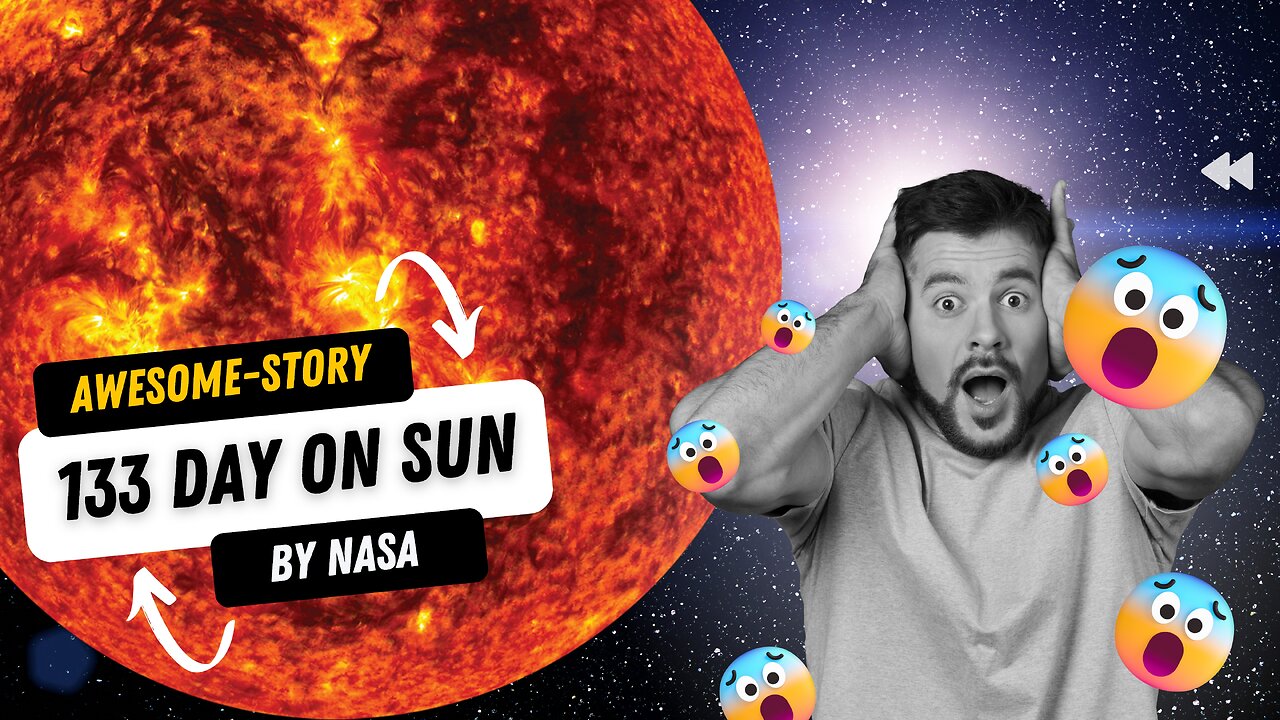Premium Only Content

133 Day On Sun
The 133-day timelapse of the Sun by NASA is a video that chronicles solar activity from August 12 to December 22, 2022, as captured by NASA's Solar Dynamics Observatory (SDO). The video shows the Sun's outermost atmospheric layer, the corona, in extreme ultraviolet light.
The video starts with a relatively calm Sun, but as time goes on, more and more active regions appear. These active regions are areas of the Sun's surface where the magnetic field is strongest. They are also the places where solar flares and coronal mass ejections (CMEs) are most likely to occur.
The video shows a number of solar flares and CMEs, including a large flare on September 1, 2022, that was one of the strongest flares of the year. The flare caused a radio blackout in parts of North America and Europe.
The video also shows a number of other solar phenomena, such as prominences, filaments, and coronal holes. Prominences are large loops of plasma that rise up from the Sun's surface. Filaments are long, thin strands of plasma that hang down from the Sun's surface. Coronal holes are areas of the Sun's corona where the magnetic field is weak and the plasma is less dense.
The 133-day timelapse of the Sun is a stunning visual representation of the Sun's activity. It provides a glimpse into the dynamic nature of our star and the processes that drive its behavior. The video is a valuable resource for scientists studying the Sun and its influence on Earth's climate and environment.
You can watch the full video on the NASA Goddard YouTube channel.
Here are some additional details about the video:
The video was created using images taken by SDO's Atmospheric Imaging Assembly (AIA) instrument.
The images were taken at a wavelength of 17.1 nanometers, which is an extreme ultraviolet wavelength that shows the Sun's outermost atmospheric layer: the corona.
The images were compiled every 108 seconds, which means that the video condenses 133 days, or about four months, of solar observations into 59 minutes.
The video shows the Sun rotating from east to west.
The video has been sped up by a factor of 20,000.
I hope this helps!
Sources
svs.gsfc.nasa.gov/14263#:~:text=)%20%5B74.6%20KB%5D-,This%20133%2Dday%20time%20lapse%20of%20the%20Sun%20at%2017.1,plasma%20and%20numerous%20solar%20eruptions.&text=Watch%20this%20video%20on%20the,it%20influences%20the%20solar%20system.
-
 LIVE
LIVE
Sm0k3m
6 hours agoPlaying games on Rumble
245 watching -
 10:37
10:37
Russell Brand
2 days agoHow is this even allowed?
113K692 -
 1:37:26
1:37:26
Real Coffee With Scott Adams
2 hours agoEpisode 2701 CWSA 12/26/24
40.2K21 -
 2:58:58
2:58:58
Wendy Bell Radio
7 hours ago9 Steps Ahead
80K105 -
 LIVE
LIVE
LFA TV
16 hours agoTIME FOR A NEW SPEAKER! | LIVE FROM AMERICA 12.26.24 11am EST
5,297 watching -
 1:40:22
1:40:22
Game On!
13 hours ago $4.43 earnedNFL Thursday Night Football Seahawks at Bears EXPERT Picks!
33.3K9 -
 1:50:54
1:50:54
xBuRnTx
2 hours agoWho's Ready for New Years!
23.5K1 -
 12:09
12:09
Tactical Advisor
15 hours agoSmith & Wesson Shield Plus Carry Comp
19.3K1 -
 4:35:25
4:35:25
Father Russell
8 hours agoDelta Force | Not A Woman? | Mad Martigan Time
60.9K5 -
 3:29:42
3:29:42
BrookieMonster
15 hours ago $44.71 earnedChristmas Stream: Marvel Rivals with CallmeSeags 🎄
180K13